NEWS FROM THE MEADOWS - 19. April 2021
The insect on the following photograph ...
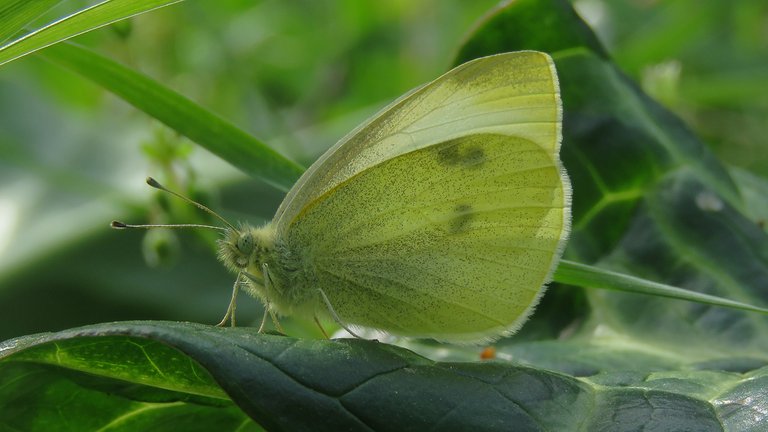
... is the very common Cabbage white butterfly (Pieris rapae) ...
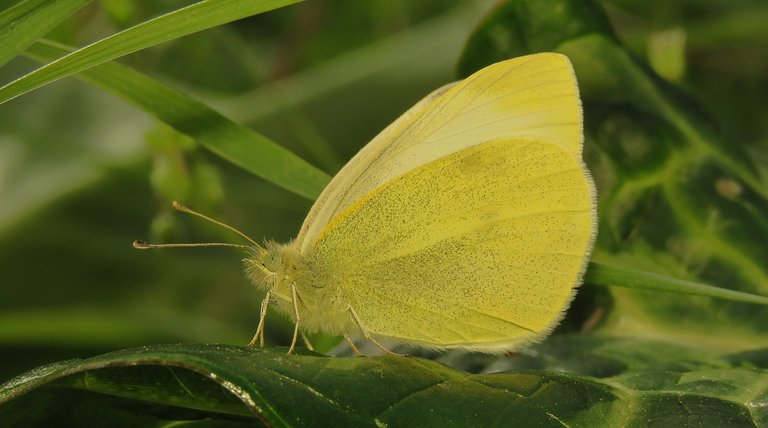
... a female of this species ... on this photograph, taken with the flash on, you can see the same scene in a different light, that changes things considerably ... while on the following shot, taken some seconds before ...

... you can see the male and the female ...
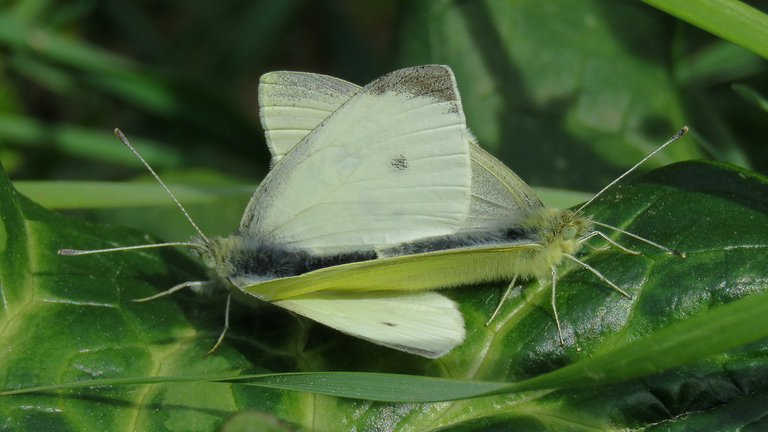
... the look from above reveals some details on the inner surface of the wings ... the male has only one spot on each forewing, the female - double.
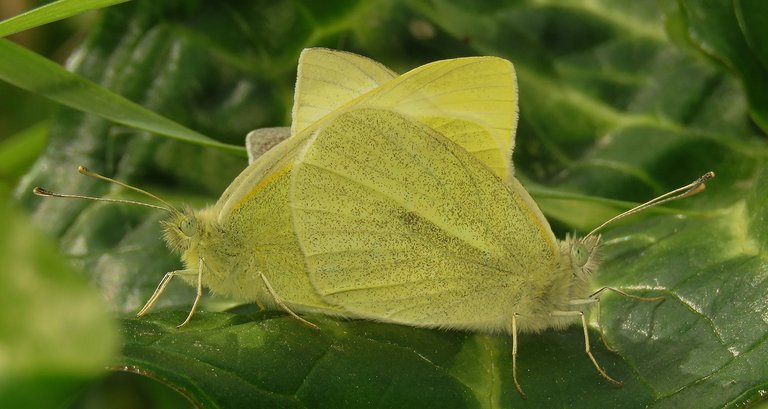
Here is another shot with the flash on ... taken some seconds before the male flew away ...
... leaving the female posing for the final shot, taken some seconds before I continued my walk through the fresh green grass.
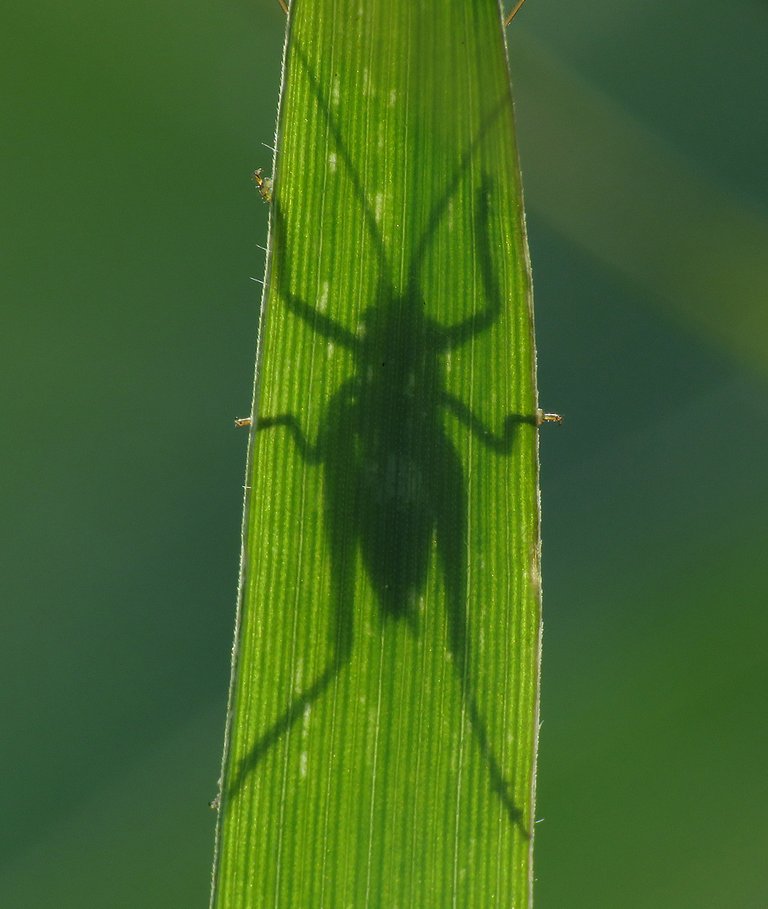
I passed by the shadow of some small bush cricket ...
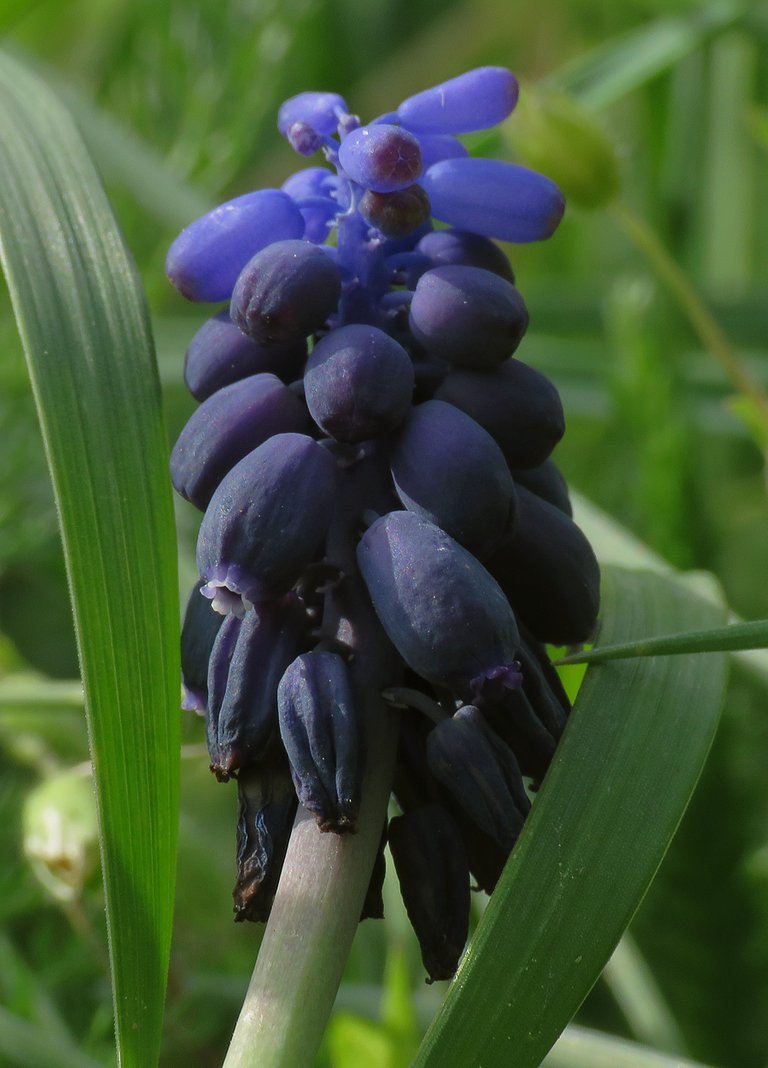
... took this floral portrait of the Muscari neglectum plant ...
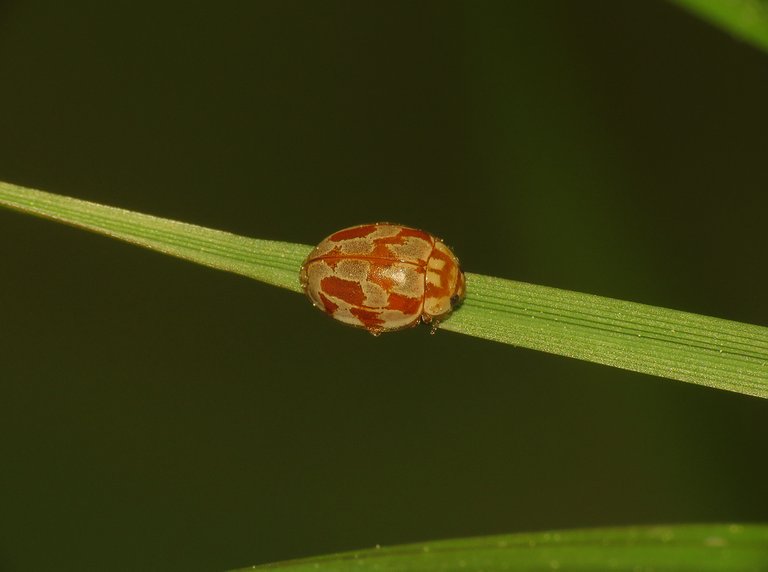
... and found an interesting little beetle that I rarely encounter here in my area ...
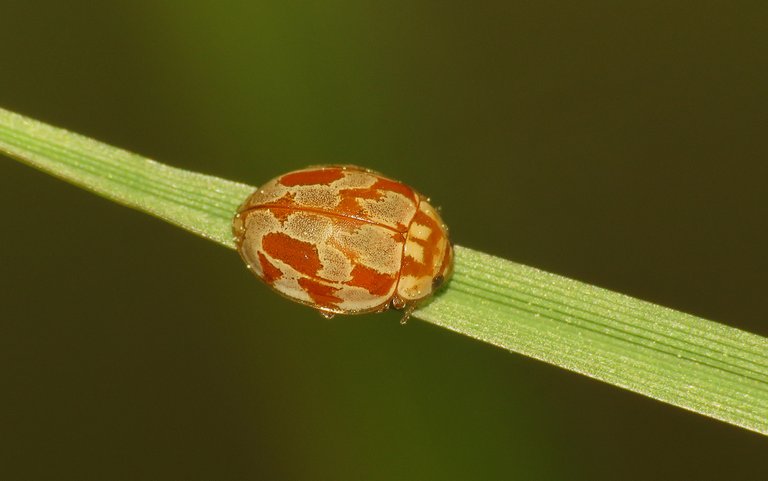
... the Myrrha octodecimguttata lady beetle. The spots, the color and pattern can vary considerably inside the same species ... so, this is not the definitive look of the Myrrha octodecimguttata.

They spend most of their life high on the tops of the trees, feeding on aphids there.
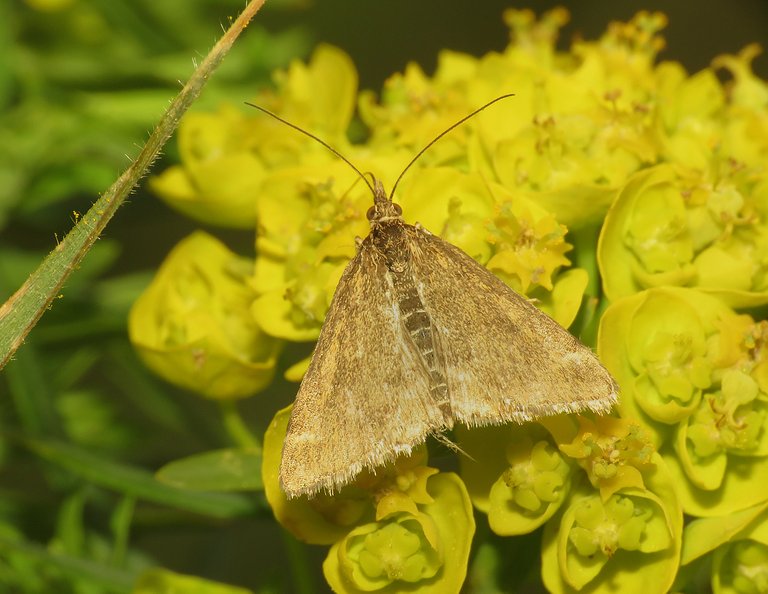
Some time later, and about a hundred meters further, closer to the sea, in an area with short grass and less dense vegetation ... I sat near the Euphorbia helioscopia plant ...
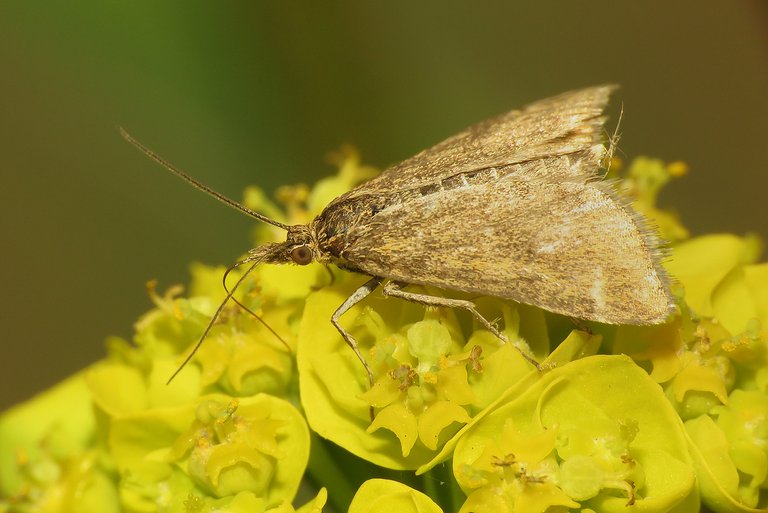
... there is always something going on around these tiny but nectar - rich flowers ... this small moth, I don't know the exact species, was collecting the nectar through the long proboscis ... this way the insect can explore many minuscule flowers while standing in the same place ...
... on this enlargeable shot the feeding apparatus is folded.
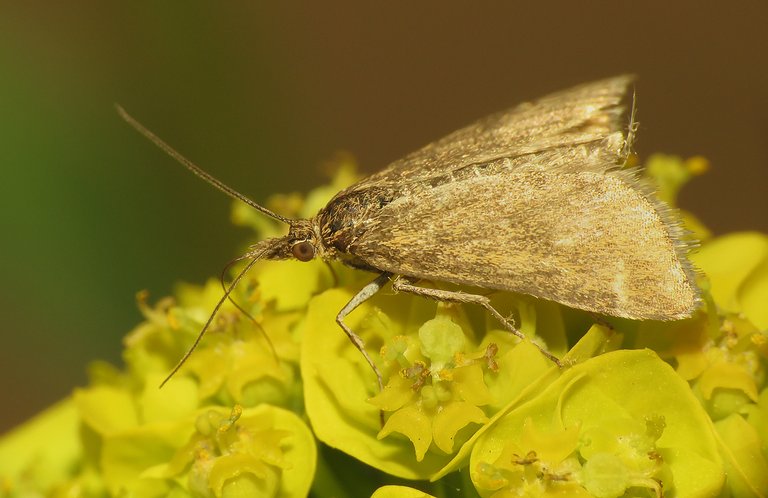
... when the moth flew away ...
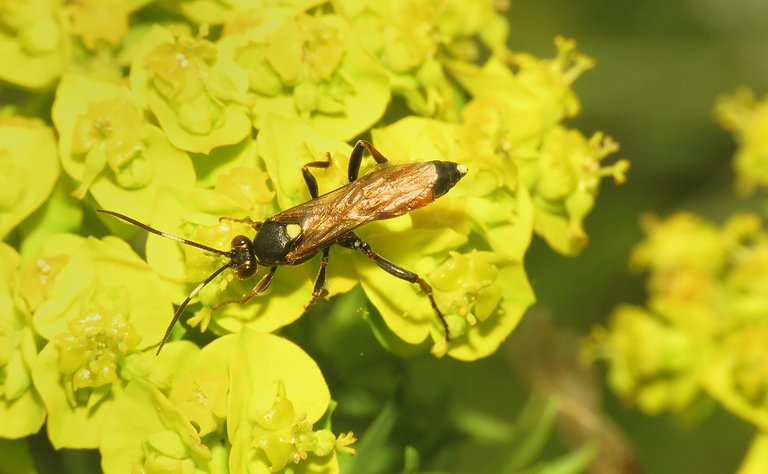
... the Ichneumon stramentarius wasp arrived.
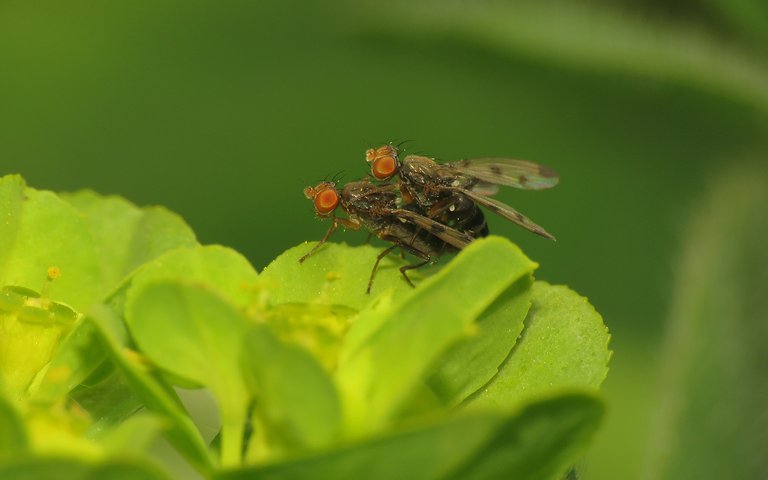
On the neighboring plant of the same kind ...
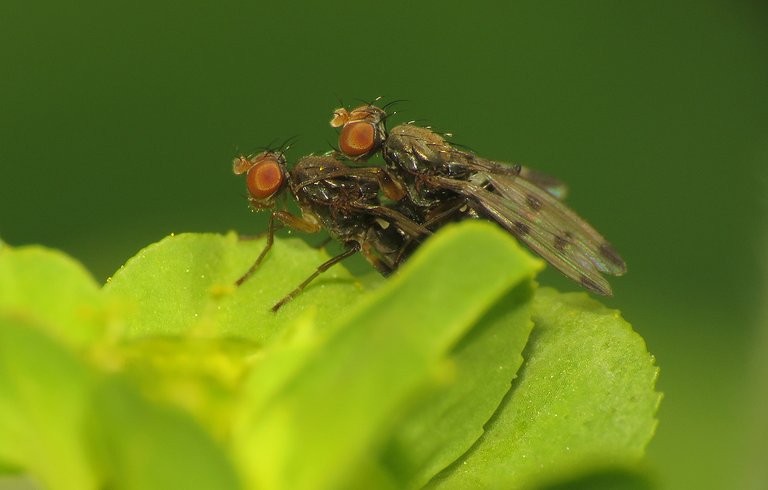
... two minuscule flies were mating ...

... these are the Geomyza tripunctata flies ...
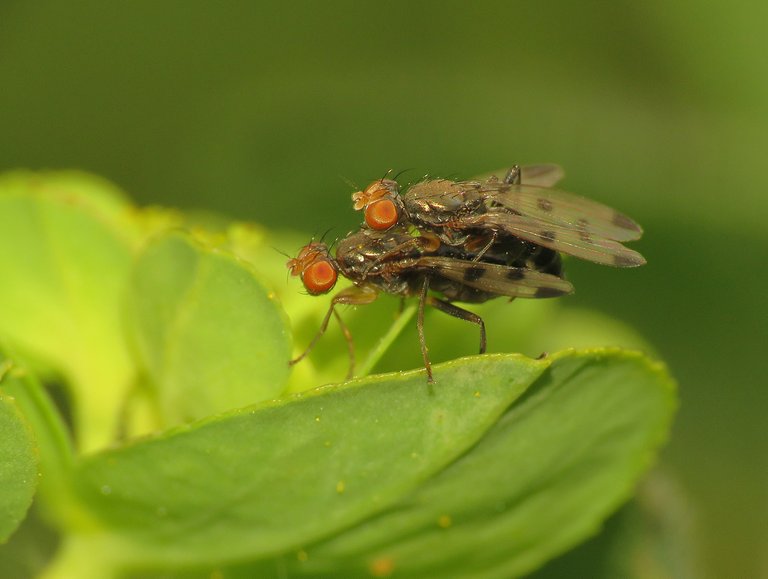
The adults feed on nectar, and the larvae tunnel and feed in the stems of grasses.

This is the Romulea bulbocodium flower ... this plant appeared in quite a few of my posts since the springtime started ... and even a few weeks before the official start ... but this particular flower is pretty special. These flowers usually grow surrounded by dense short grass, and it’s difficult to get an idea of how the entire plant looks ... this one has grown on the clear terrain with no distracting vegetation around - and it looks fabulous :) in my opinion ... very cool plant, it looks a bit like some elegant monster with tentacles.
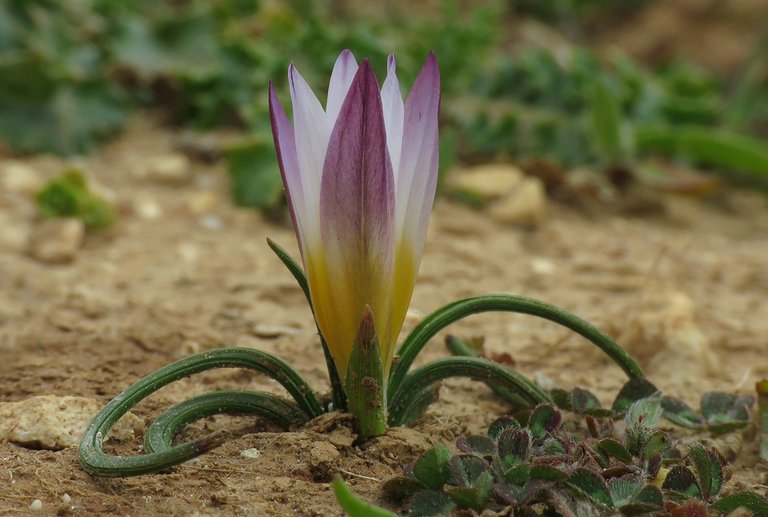
On this shot I used only the ambient light ... it was (and still is) a mostly cloudy day with an occasional outburst of sun.
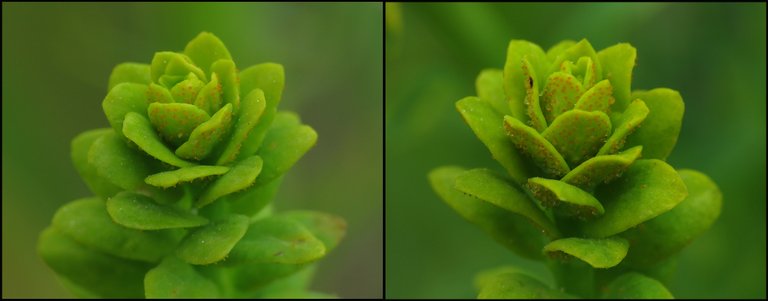
A few steps further I found and photographed this plant ...
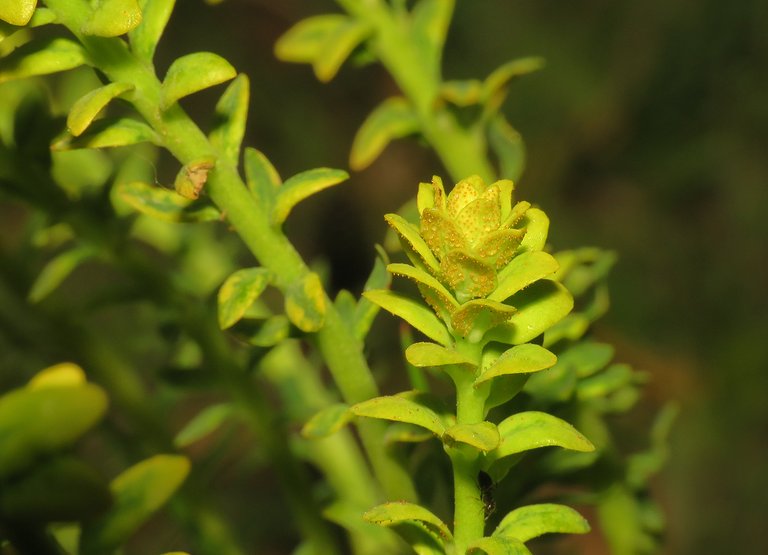
... and here I can't tell you the name of the species ... it looks a bit like some kind of Euphorbia ... but I don't know ... I spent about an hour searching through the Internet, and I still don't know ...
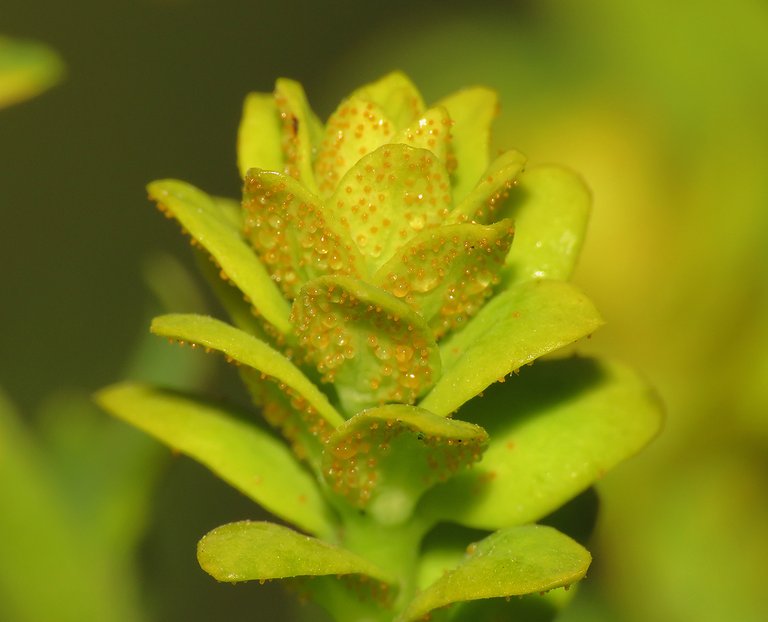
... the lower surfaces of the small leaves on the tops of these mysterious plants were covered with some kind of bright orange blisters and a multitude of tiny droplets ...
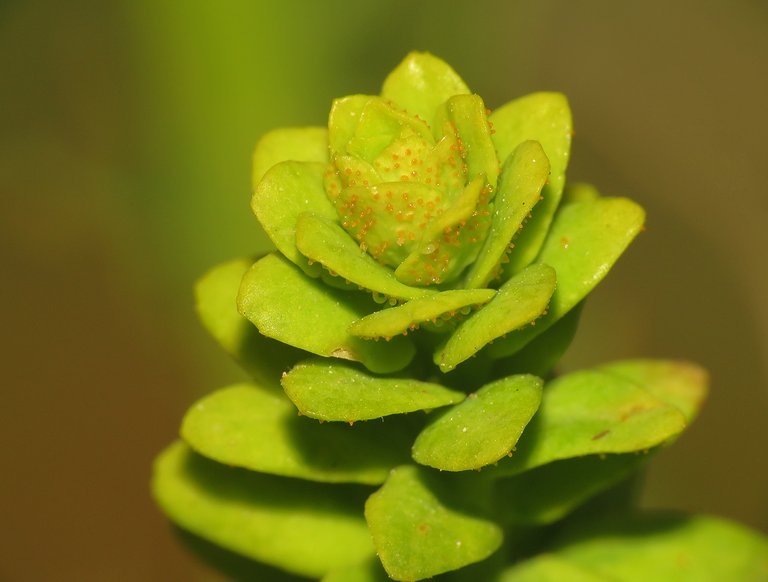
... I never noticed this thing before ...
... it looks that some flower - like structure is opening on the top of this particular plant ...you can also take a glimpse of a minuscule ant hidden among the leaves ... on the following, enlargeable shot ...
... you can take a better look at the ant ... that was feeding on this orange structure ...
... this is the Crematogaster auberti ant, a very small species that I often encounter on flowers of various Euphorbia plants.

Here the structure on the top of the plant looks different ... and this is the last thing about this plant.

Some minutes later, when I found this colorful orchid ...

... the sun appeared ...
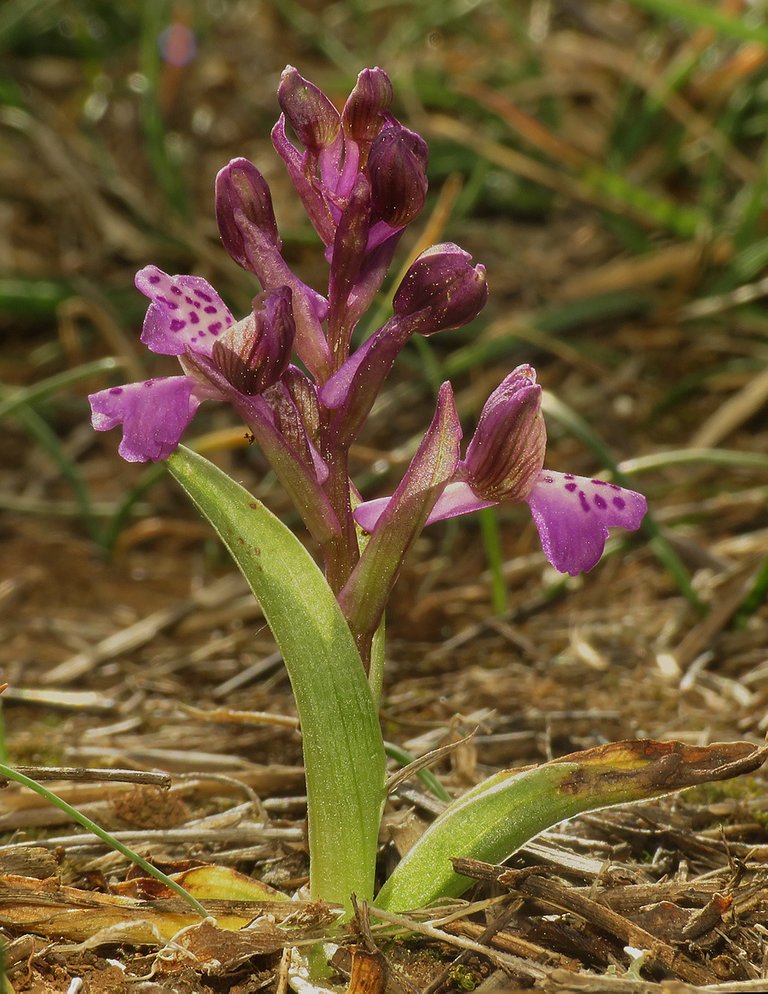
... this is the Anacamptis morio orchid. After this shot I decided to go home ...
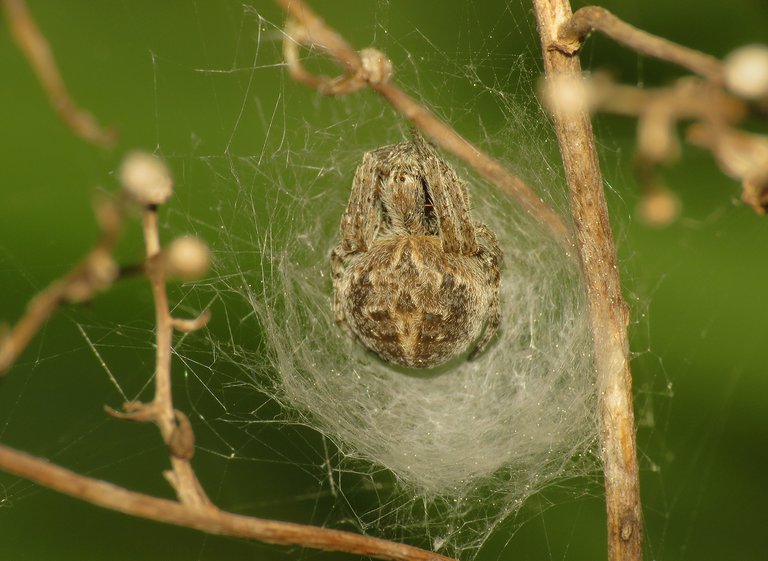
... but on the way back to the car, while walking through the tall grass again ... I saw the Agalenatea redii spider resting on his little nest ...
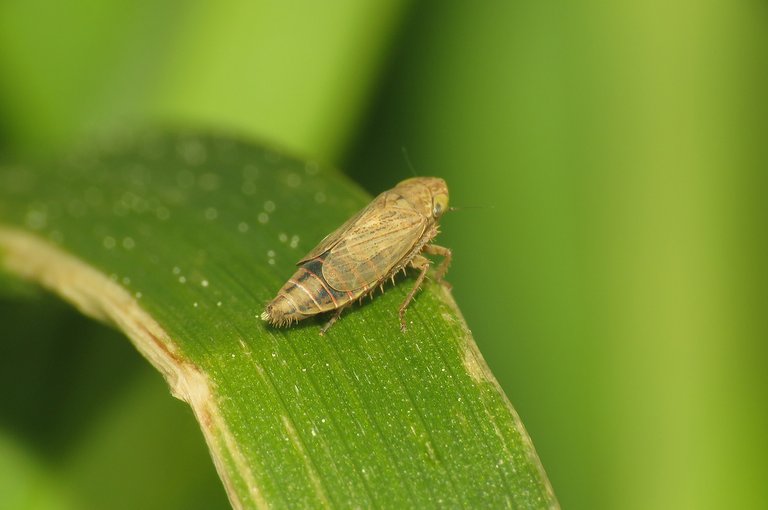
... some leafhopper ready to jump from a blade of grass ...

... some minuscule fly on another leaf of grass ...
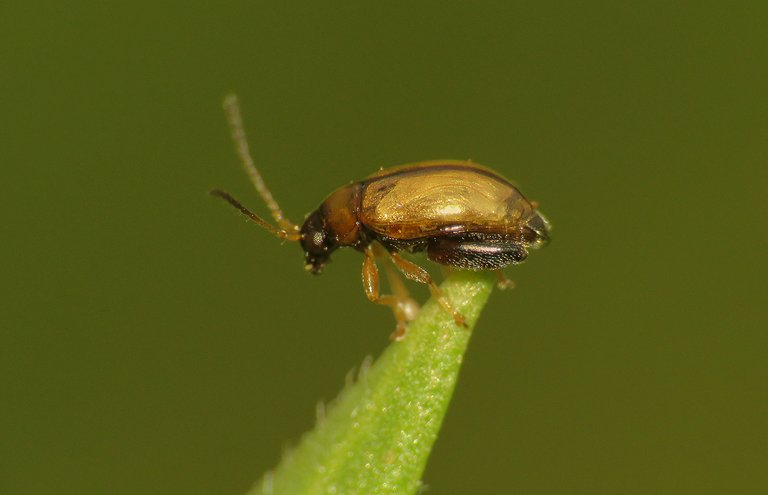
... a minuscule flea beetle, Longitarsus nasturtii ...
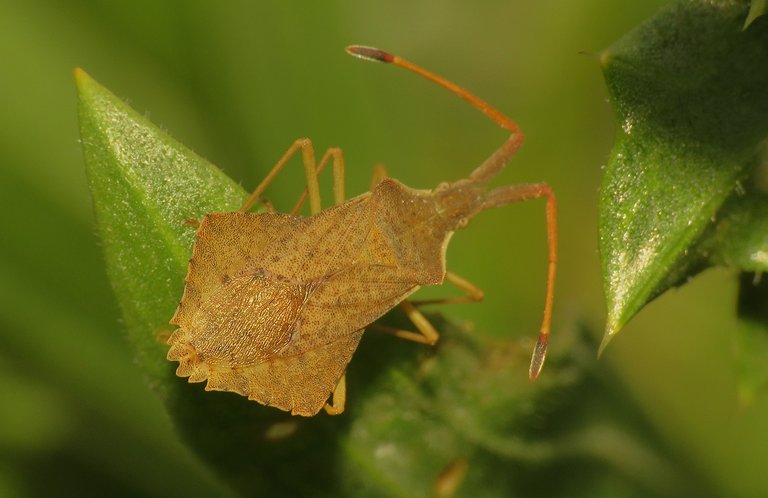
... this interestingly shaped bug from the Coreidae family, the Syromastus rhombeus ... commonly known as the Rhombic leatherbug ...
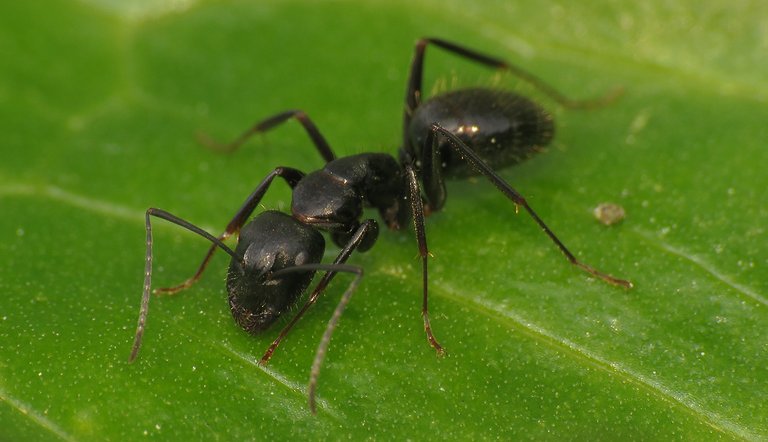
... the relatively big Formica fusca ant ...
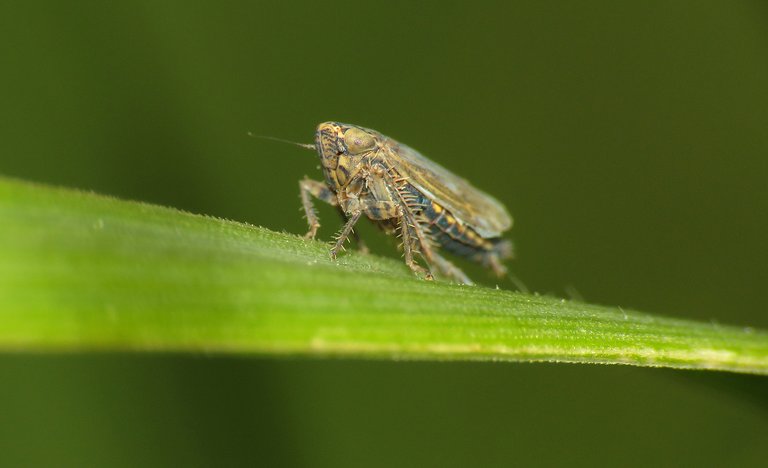
... another small leafhopper ...
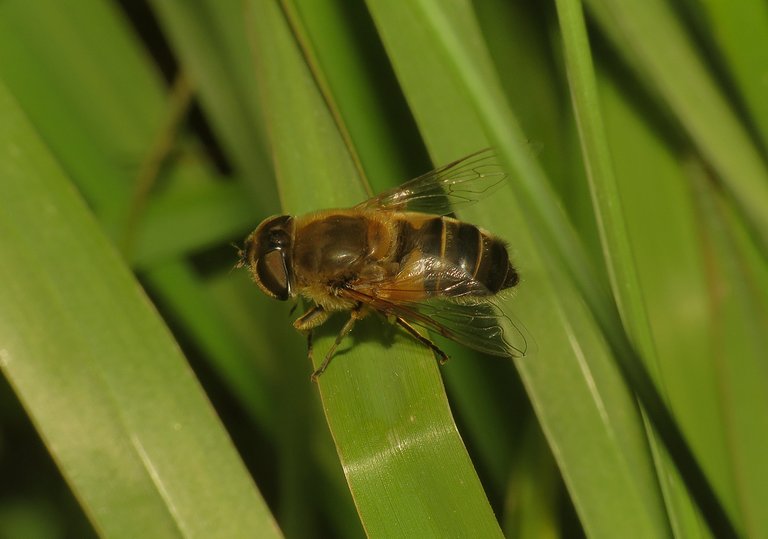
... and the bee - mimicking Eristalis tenax fly, from the large and varied Syrphidae family ... so I had to stop often and take more shots ... it was a long walk, but at the end - it had to end ... and that can be said about this post as well :) this is THE END.
As always in these posts on HIVE the photographs are my work, and as always in this NEWS FROM THE MEADOWS series, they were all taken today.
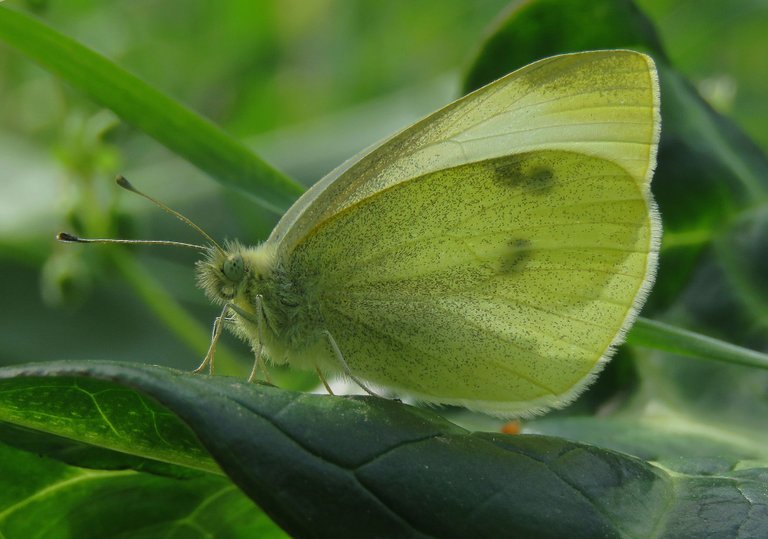
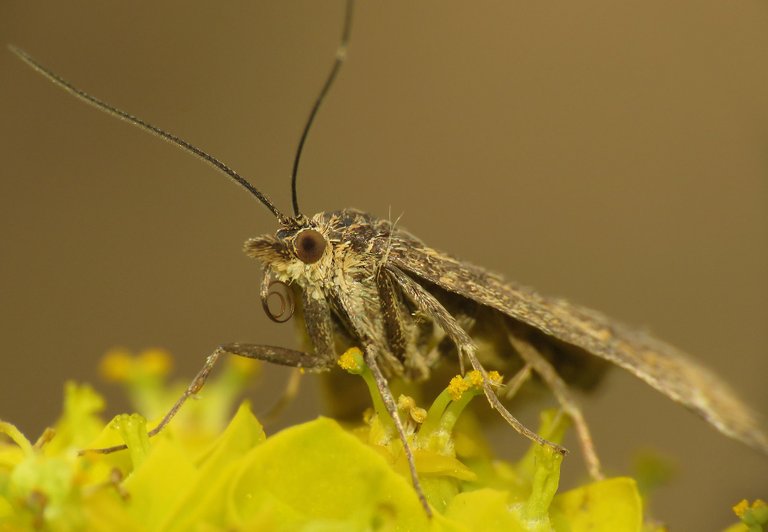

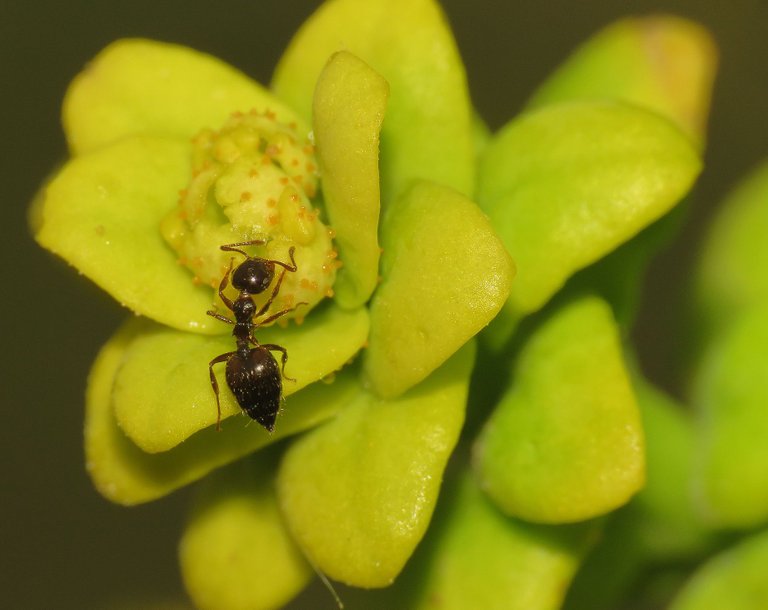
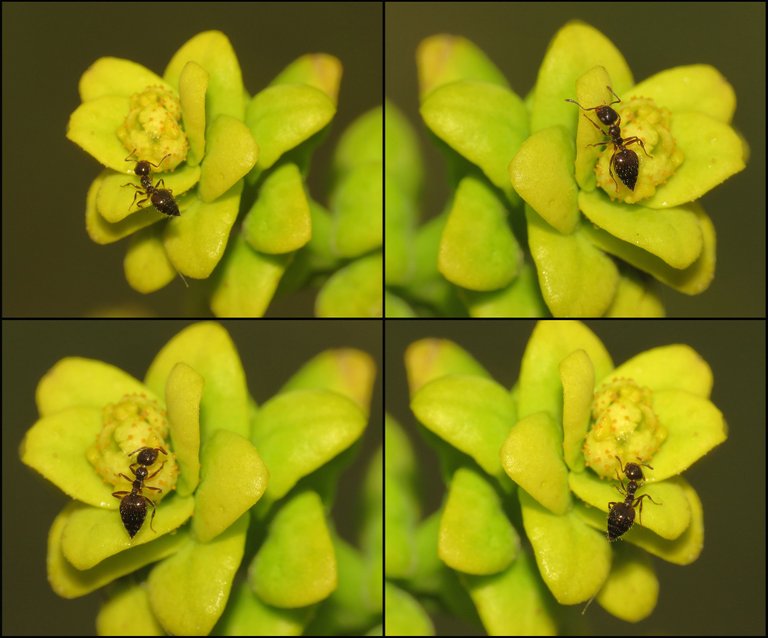
It's just something. Thank you for another portion of the buzz.
After such photos, I want to take a camera and go to learn to photograph (I went through this, and realized that it was not mine). ReHIVE
Link to vote for @cranium as a witness
Your post is reblogged and upvoted by me. It is a good post. Thank you @borjan
Thank you :)
Everything is beautiful but Orchids are very beautiful, rare and beautiful to me ;))
Always beautiful photography sir 🤩🤩
Thank you
What a post!
I felt like I was part of Honey I Shrunk the Kids with all those incredible closeups. Reminds me both of the beauty we have right under our noses, and how well spent the time is studying and even sharing it.
Fantastic collection of views and photos Borjan!
:D Cool movie, one of the greatest micro adventure I saw in cinema. Thanks :) glad you like this macro report from the meadows in my area.
Always enjoy your photos man. Which lens and set up you are using?
Thanks :) I use the camera Canon PowerShot SX60 HS ... and the macro lens adapter Raynox DCR-250 Super Macro Snap-On Lens ... for the macro I often use the built - in flash of the camera, but I cover it with a piece of toilet paper.
Always amazing photos and beautiful white butterfly 😻. !LUV
Thanks :)
Hi @borjan, you were just shared some LUV thanks to @sreypov. Having at least 5 LUV in your wallet enables you to give up to 3 LUV per day, for free. See the LUV tokens in your wallet at https://hive-engine.com or learn about LUV at https://peakd.com/@luvshares